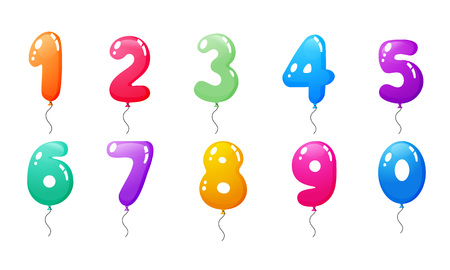Introduction: The Evolution of Tarot in Europe
The fascinating story of tarot stretches across centuries, weaving its way through the cultural and artistic tapestry of Europe. What began as a set of playing cards in the courts of 15th-century Italy soon blossomed into a rich tradition of symbolism, mysticism, and self-reflection. From the ornate decks of Renaissance Italy to the more austere designs found in France and Switzerland, tarot evolved alongside the societies that embraced it, absorbing elements of local folklore, religious iconography, and artistic trends. This diverse heritage laid the groundwork for the emergence of iconic decks such as the Rider-Waite-Smith, which would later bring its own distinctive vision to the world of tarot. By understanding how tarot developed across Europe, we can better appreciate the variety of interpretations and styles that continue to inspire readers and collectors alike, setting the stage for a deeper comparison between the beloved Rider-Waite-Smith deck and its classic European predecessors.
2. Origins and Iconography: Rider-Waite-Smith vs. Traditional Decks
When considering the origins and iconography of tarot decks, it is essential to recognise both their historical roots and the evolution of their imagery. The Rider-Waite-Smith (RWS) Tarot, first published in 1909 in London, emerged during a period of burgeoning interest in mysticism and esotericism in Britain. Crafted by Arthur Edward Waite and illustrated by Pamela Colman Smith, the RWS deck was designed not only as a tool for divination but also as an accessible visual guide to deeper spiritual truths. In contrast, classic European decks such as the Tarot de Marseille and Italian tarocchi have their origins in the Renaissance courts of France and Italy, dating as far back as the fifteenth century. These early decks were primarily used for card games before being adopted for occult purposes.
Comparing Iconography and Symbolism
The distinction between these decks becomes most apparent when one examines their imagery and symbolism. The Rider-Waite-Smith deck is renowned for its richly detailed scenes on all seventy-eight cards, including the Minor Arcana—a feature that set it apart from its predecessors. Pamela Colman Smith drew upon Christian mysticism, Kabbalah, and Western esotericism, embedding each illustration with layers of meaning accessible to readers of all backgrounds. Conversely, the Tarot de Marseille and Italian tarocchi typically present more stylised and sparse illustrations, especially in the Minor Arcana, where pip cards show simple arrangements of suit symbols without narrative scenes.
Key Differences at a Glance
| Aspect | Rider-Waite-Smith | Tarot de Marseille / Italian Tarocchi |
|---|---|---|
| Origin | Early 20th-century Britain | 15th-17th century France & Italy |
| Artistic Style | Pictorial and narrative scenes on all cards | Stylised, symbolic images; narrative scenes usually only on trumps & court cards |
| Symbolism | Esoteric: Christian, Kabbalistic, Hermetic influences | Medieval Christian & folk symbolism; less overtly esoteric |
| Functionality | Designed for divination; accessible to beginners | Originally for card games; later adapted for divination |
Cultural Contexts and Lasting Impact
The Rider-Waite-Smith’s approach—emphasising accessibility and layered meaning—has greatly influenced modern British tarot culture, making it the preferred choice in many English-speaking circles. Meanwhile, traditional European decks maintain a loyal following among historians and practitioners who value their classical aesthetic and historical continuity. Together, these traditions illustrate how tarot’s visual language has adapted across centuries, reflecting changes in culture, spirituality, and artistic sensibility.

3. Structure and Card Meanings
When comparing the Rider-Waite-Smith (RWS) Tarot to classic European decks such as the Tarot de Marseille or the Italian Tarocchi, notable differences emerge in both structure and card meanings. The RWS deck, first published in early 20th-century Britain, introduced a more detailed illustration style, particularly for the Minor Arcana. Each suit card, from Ace to Ten, is vividly depicted with narrative scenes, making interpretation more accessible, especially for beginners. In contrast, classic European decks often feature non-scenic pip cards in the Minor Arcana, relying instead on traditional numerology and suit symbolism.
Naming Conventions and Suit Structure
The naming conventions within each tradition also reflect subtle yet significant cultural distinctions. For instance, in the RWS deck, the court cards are titled Page, Knight, Queen, and King. However, in many European decks—especially those following French or Italian traditions—the Page may be known as the Valet or Knave, and other titles may vary according to regional language and custom. Additionally, some early European decks include unique court cards or even extra trumps, reflecting local variations.
Major Arcana: Archetypes and Interpretation
Examining the Major Arcana reveals further divergence. The Rider-Waite-Smith system imbues each trump card with layered symbolism drawn from Western esoteric traditions. For example, The Magician and The High Priestess are named and depicted in ways that invite deeper psychological and spiritual readings. Classic European decks may use different names or imagery for these cards—such as Le Bateleur (The Juggler) and La Papesse (The Popess)—with interpretations rooted more firmly in medieval allegory and fortune-telling customs.
Minor Arcana: From Pips to Pictures
Perhaps most striking is the approach to the Minor Arcana. In the RWS tradition, every card tells a story through its illustration—making cards like the Three of Swords or Nine of Cups immediately evocative. In European decks like the Marseille, these cards present only suit symbols arranged in patterns. Readers must draw upon numerological knowledge and suit associations to find meaning, resulting in a more interpretive and often traditional approach.
Overall, these structural and interpretive differences not only highlight the evolution of tarot through history but also speak to the diverse intentions behind their use—whether as tools for divination, meditation, or cultural storytelling within British and broader European contexts.
4. Artwork and Artistic Influences
The visual language of tarot is as much a reflection of its era and origin as it is an esoteric tool. When comparing the Rider-Waite-Smith Tarot to classic European tarot decks, one finds a fascinating divergence in artistic styles, notable designers, and the influence of local cultures on their imagery.
Prominent Designers and Their Visions
The Rider-Waite-Smith Tarot, conceived in early 20th-century England, was brought to life by artist Pamela Colman Smith under the guidance of mystic A. E. Waite. Smith’s illustrations are renowned for their clear symbolism, vibrant colour palette, and expressive figures—a significant departure from earlier decks that often relied on more abstract or generic designs, especially in the Minor Arcana.
In contrast, classic European decks such as the Tarot de Marseille or the Visconti-Sforza were crafted centuries earlier by anonymous or court-appointed artists. Their style leaned towards medieval or Renaissance aesthetics: figures are often stylised, with limited perspective and a muted range of colours dictated by available pigments of the time. The artistic intent was often more decorative than narrative, especially in the pip cards.
Cultural Influences on Visual Language
The Rider-Waite-Smith deck’s artwork reflects Edwardian British tastes—drawing on Pre-Raphaelite art, theatricality, and an emerging appetite for spiritualism. Smith herself was influenced by stage design and folklore, which can be seen in her evocative storytelling through image.
European decks bear the imprint of their regions: Italian decks like Visconti-Sforza feature Gothic ornamentation and courtly grandeur; French decks such as Marseille showcase woodblock printing’s bold lines and simplified forms. Local dress, heraldic motifs, and religious iconography are prevalent, subtly encoding societal values of their eras.
Artistic Comparison Table
| Deck | Designer/Artist | Art Style | Cultural Elements |
|---|---|---|---|
| Rider-Waite-Smith | Pamela Colman Smith (UK) | Illustrative, narrative-driven, colourful | Edwardian British folklore, theatre, mysticism |
| Tarot de Marseille | Anonymous (France) | Simplified woodcut, stylised forms | French medieval dress, Christian symbols |
| Visconti-Sforza | Court Artists (Italy) | Gothic/Renaissance painting, ornate detail | Noble regalia, Italian heraldry, religious motifs |
A Living Tradition of Artistic Exchange
This interplay between artist vision and cultural context ensures that each tarot deck not only serves divinatory purposes but also stands as a testament to its time and place. For modern readers in Britain and beyond, appreciating these differences enriches both one’s historical understanding and personal connection to the cards.
5. Cultural and Divinatory Use in British and Continental Contexts
Within the tapestry of European tarot history, the distinction between British and continental approaches is both subtle and profound. In Britain, tarot’s journey was intimately tied to the spiritual revival of the late Victorian and Edwardian eras, when secret societies such as the Hermetic Order of the Golden Dawn reinterpreted tarot as a mystical and psychological tool. The Rider-Waite-Smith deck, with its evocative imagery, quickly became synonymous with personal introspection and divinatory practice among the British public. Tarot readings in Britain often focus on psychological insight, self-reflection, and the navigation of life’s moral choices—reflecting a culture that values individual agency and philosophical inquiry.
Across continental Europe, however, tarot retained closer links to its traditional roots as a parlour game before it was adapted for fortune-telling. Decks like the Tarot de Marseille or the Swiss 1JJ Tarot were used not only for divination but also for social gaming, especially in France, Switzerland, and Italy. When employed for readings, continental practices tend to emphasise fate, destiny, and communal archetypes, drawing upon longstanding cultural narratives about luck and fortune. In many European countries, card readers are viewed as keepers of folk wisdom, blending tarot with regional superstitions and storytelling traditions.
Popular perception further illustrates these differences: while modern Britain has largely embraced tarot as a legitimate tool for self-development—often associated with therapists or life coaches—continental Europeans may still view it through a lens coloured by historic suspicion or folkloric intrigue. In some regions, professional cartomancy is regulated or even stigmatised; in others, it persists as an accepted part of cultural heritage. This divergence underscores how tarot’s role in society has been shaped by each region’s relationship with mysticism, religion, and modernity.
Ultimately, comparing the Rider-Waite-Smith deck’s British legacy with classic European decks reveals how tarot adapts to meet the spiritual needs of its time and place. Whether approached as a mirror for the soul or as a bridge to destiny, tarot continues to reflect—and influence—the cultural landscapes in which it finds itself.
6. Legacy and Modern Influence
The enduring legacy of both the Rider-Waite-Smith (RWS) Tarot and classic European tarot decks continues to shape the way tarot is approached and practised in the UK, as well as across the wider world. The RWS deck, with its evocative imagery and accessible symbolism, has become a mainstay in contemporary British tarot circles, often serving as the first port of call for newcomers and a reliable reference for seasoned readers alike. Its influence is evident not only in the proliferation of derivative decks but also in the language and structure of modern tarot literature, workshops, and online communities.
Yet, classic European decks—such as the Tarot de Marseille and other traditional continental packs—retain a devoted following amongst practitioners who value their historical significance and nuanced iconography. In Britain, there has been a notable revival of interest in these older decks, particularly among those seeking to reconnect with tarot’s roots or explore divinatory techniques that differ from the more psychological approach popularised by the RWS system.
The interplay between these two traditions has enriched the British tarot landscape, encouraging diversity in interpretation and practice. Workshops, study groups, and even tarot-themed events across the UK frequently feature comparative sessions where enthusiasts can explore the subtle distinctions between RWS-inspired readings and those based on European frameworks. This cross-pollination fosters a dynamic environment in which tradition is respected while innovation is welcomed.
Moreover, contemporary British deck creators often draw upon both schools when designing new packs, blending the clarity of RWS symbolism with the elegant austerity of classic European art. This hybridisation ensures that modern tarot remains both relevant and respectful of its varied heritage. The ongoing dialogue between these traditions offers practitioners a rich tapestry of meanings to draw upon, deepening their connection to tarot’s multifaceted history.
As digital platforms broaden access to resources and connect readers across continents, the influence of both RWS and classic European decks continues to expand. In Britain today, it is not uncommon to find a single reader adept at interpreting both systems, integrating their insights for clients who appreciate a tailored approach grounded in cultural awareness and historical context.
Ultimately, whether one favours the familiar archetypes of the Rider-Waite-Smith or prefers the timeless elegance of traditional European cards, it is clear that both have left an indelible mark on modern tarot practice in Britain. Their legacies endure not just as artefacts of esoteric history but as living tools for insight, reflection, and personal growth—a testament to tarot’s remarkable capacity to adapt and inspire across generations.


